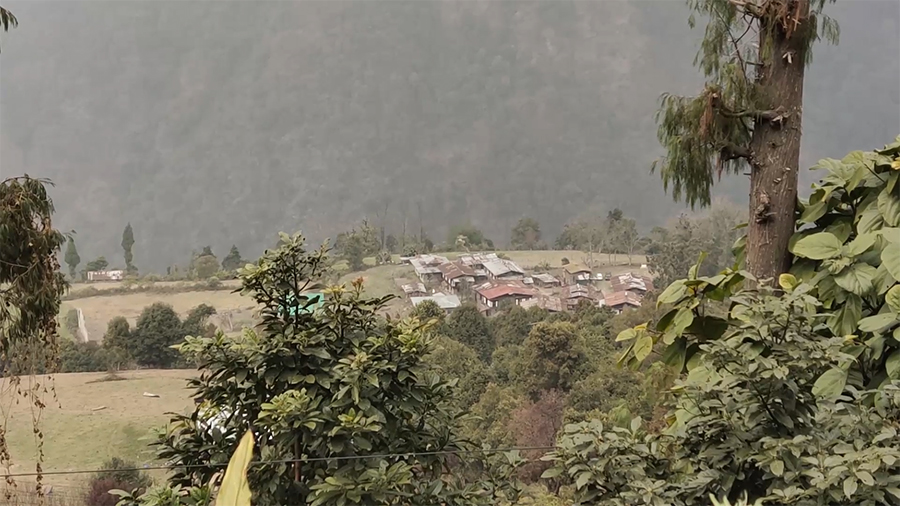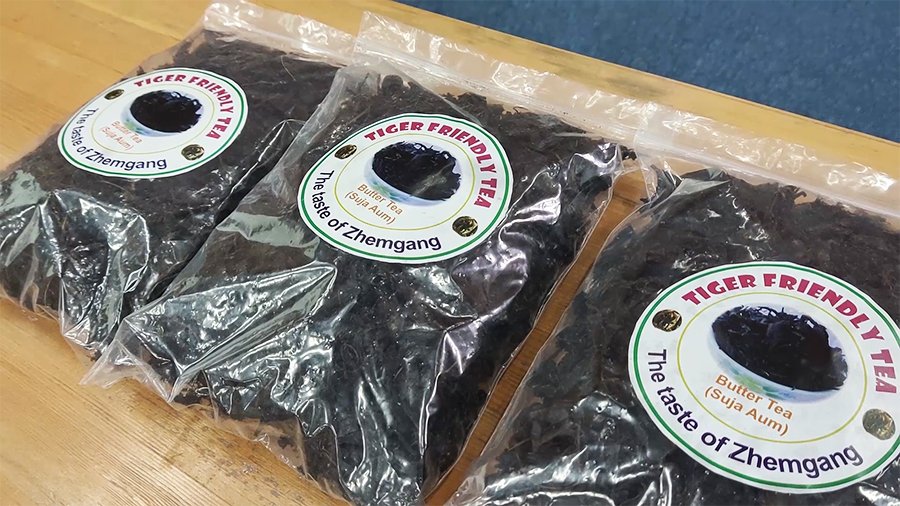
Zhemgang not only has the highest percentage of forest cover in the country but also the most number of tigers. With rich biodiversity comes increased human-wildlife conflict. In Zhemgang, the conflict is especially with tigers and wild boars. To mitigate this issue, a community-based approach was initiated by upscaling tea plantations to provide a natural barrier between wildlife and human settlements. This is also becoming a source of income for the communities.

The trial project has been initiated on eight acres of land in the Community Forest Networking Group of Trong, Dangkhar and Pam villages in Trong Gewog in 2022. These villages see the most number of human-wildlife conflicts in Zhemgang. Last year, a tiger attacked 20 cattle in the area, killing 15 of them.
With the completion of the project recently, which is deemed a success, 300 packages of tealeaf, commercially sold as Tiger Friendly Tea were produced. The project, which involved 33 households, launched its first product on Thursday.
“From the trial project, we could make around 57 kilogrammes of tea leaf, which I should say is a success. Looking at the good harvest, we can see the potential of producing a substantial amount of tea leaves from Zhemgang. If not on acres of land, we will try to plant on at least about 50 decimals, so that we can generate more income,” said Pema Rinzin, the chairman of the Community Forest Networking Group.
“The project has greatly benefited us, especially for women as it is less laborious, unlike other farm works. Moreover, it will provide us with income. All that we have to do is a little bit of weeding and pruning,” said Tsewang Lhamo, a resident of Pam.
The project worth over Nu 2.4 M is supported by the Global Environment Facility’s Small Grants Programme and implemented by UNDP Bhutan in collaboration with the government. The project aims to improve the livelihood of the villagers with a special focus on women through sustainable land management practices.
“We come across many human-wildlife conflict issues in the communities. Because of such cases, people lose their crops to wild animals, leaving them disheartened and some even keep their land fallow. That’s why we started the project as a migration measure,” said Jangchu Wangdi, a senior forestry officer of Zhemgang Forest Division.
Zhemgang has over 94 per cent of its land under cover. Due to fewer developmental activities, the Zhemgang has remained one of the poorer districts in the country. Overlapping habitat of wild animals and livestock and sparse settlement patterns are adding to human-wildlife conflict in the district.
Pema Samdrup, Zhemgang
Edited by Kipchu









